What are white eggplants and how are they different from regular ones?
White eggplants are the result of successful selective work. The desire of biologists to improve the taste of fruits and remove bitterness was crowned with success. From this article you will find out whether there are white eggplants, how they differ from purple fruits, which varieties and hybrids are best cultivated in the climatic conditions of our country. We will talk about the basic principles of agricultural technology that allow you to get a rich harvest.
Features of white eggplants
White eggplant is a crop developed through selective breeding from purple “relatives” in order to improve taste and appearance.
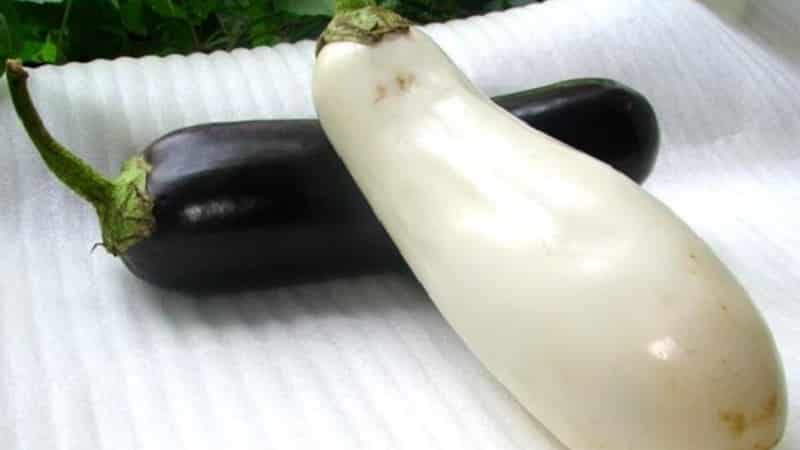
Purple fruits contain anthocyanins - substances that give the skin a characteristic shade and bitter taste of the pulp. As a result of selective work, biologists managed to isolate this substance and obtain a culture characterized by the absence of bitterness and purple color.
Reference. Anthocyanins have a beneficial effect on the human body - they remove radionuclides and reduce oxidative processes.
How are they different from purple fruits?
The shape of white eggplants varies: oval, spherical, oblong, ovoid, stem-shaped. The skin is thinner than that of purple fruits. The tender pulp contains a small amount of small seeds. There is no bitterness at all, and the taste of some vegetables is reminiscent of wild mushrooms or chicken.
Advantages and disadvantages
Advantages of white eggplants:
- lack of bitterness;
- tender and juicy pulp;
- partial or complete absence of seeds;
- universal use in cooking;
- a large number of microelements.
Disadvantages of culture:
- demands on soil composition;
- short shelf life;
- low resistance to temperature fluctuations;
- there is no way to collect and reuse the seeds.
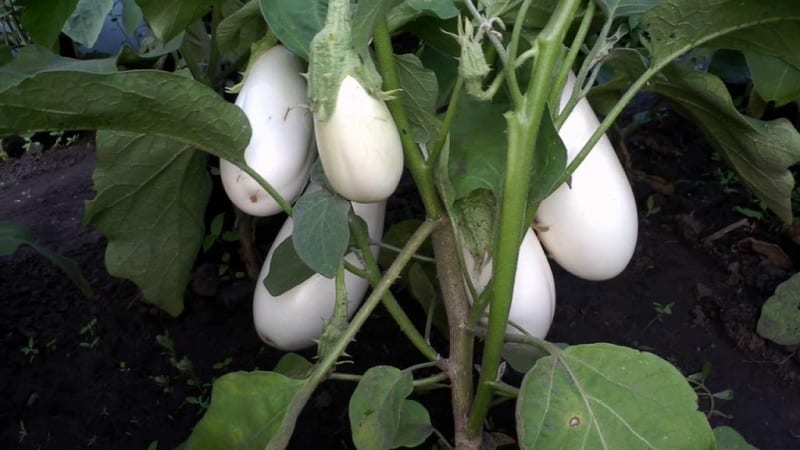
Beneficial properties and harm
White eggplants do not differ from purple ones in chemical composition and contain:
- vitamins B1, B6, B9, C, K;
- potassium;
- calcium;
- silicon;
- magnesium;
- sodium;
- sulfur;
- phosphorus;
- chlorine;
- iron;
- iodine;
- honey;
- selenium;
- fluorine;
- zinc.
Thanks to its rich chemical composition and large amount of fiber Regular consumption of vegetables helps:
- strengthening intestinal motility and normalizing stool;
- regulation of the cardiovascular system;
- reducing the level of “bad” cholesterol;
- reduction of fat deposits;
- improving blood supply to the brain;
- removing excess fluid from tissues;
- reducing the risk of cancer;
- improving the well-being of people who quit smoking (contains nicotinic acid);
- increasing skin elasticity;
- removing excess iron.
Purple eggplant varieties:
Subtleties of caring for the “Black Opal” eggplant variety
Doctors recommend avoiding eating eggplants.:
- iron deficiency anemia;
- arthritis;
- urolithiasis;
- allergies.
Varieties and hybrids
There are many varieties and hybrids of white eggplants. We have made a selection of the most popular of them.
White Night
Ultra early ripening variety compact size.
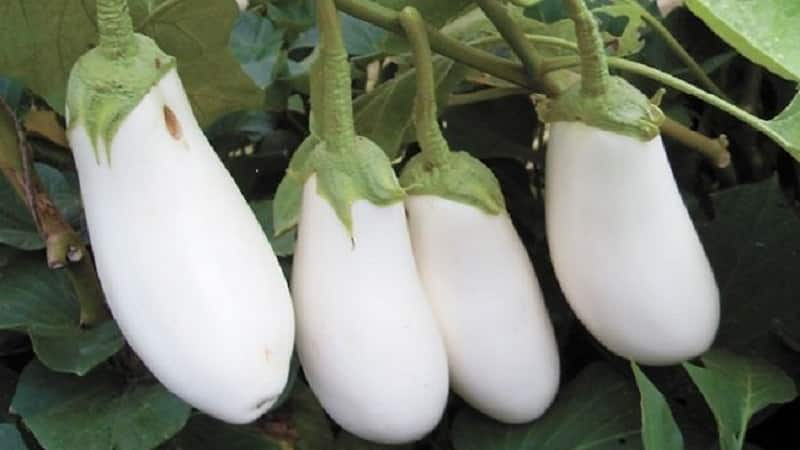
| Ripening time | Fruit shape | Length | Weight | Skin | Pulp | Harvest from 1 m² |
| 75 days | Cylindrical | 25 cm | 300-370 g | White, shiny | Tender | 5-6 kg |
Taste of mushrooms
Early ripening variety, feels great in any type of soil.
| Ripening time | Fruit shape | Length | Weight | Skin | Pulp | Harvest from 1 m² |
| 105 days | Cylindrical | 20 cm | 190-300 g | White, thin | Tender, with mushroom flavor | 5-7 kg |
Iceberg
Mid-season variety for growing in greenhouses and vegetable gardens.
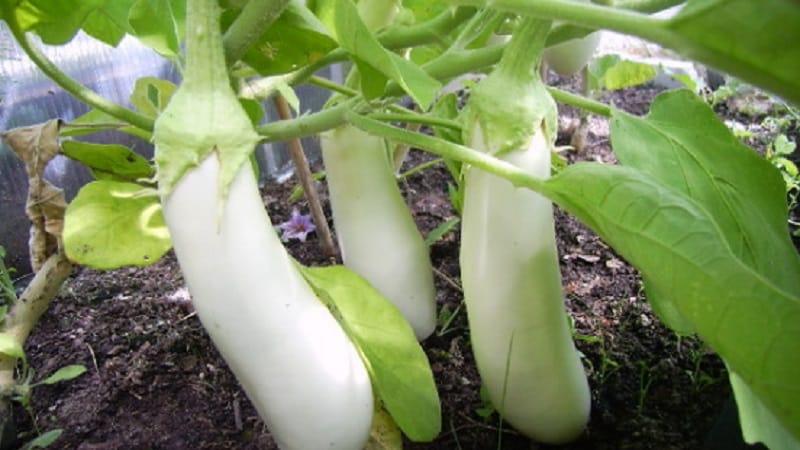
| Ripening time | Fruit shape | Length | Weight | Skin | Pulp | Harvest from 1 m² |
| 115-125 days | Oval | 20 cm | 150-270 g | White, thin | Tender, without internal voids | 4-5 kg |
Fluff
Early ripening variety for greenhouses.
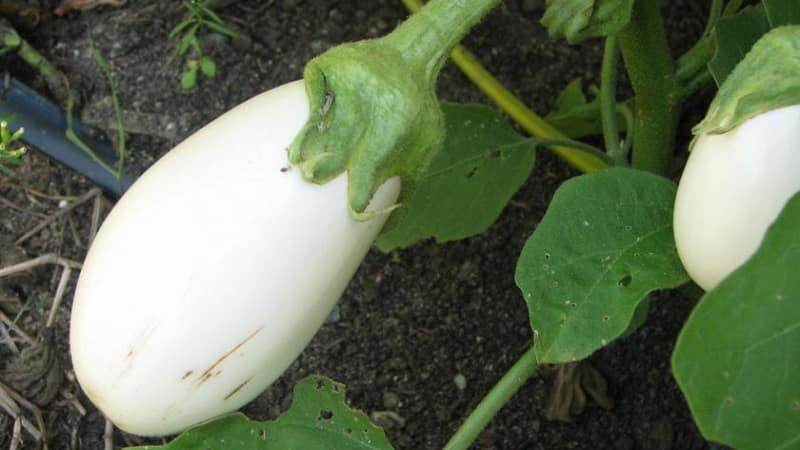
| Ripening time | Fruit shape | Length | Weight | Skin | Pulp | Harvest from 1 m² |
| 100-105 days | Oval | 25 cm | 190-250 g | White, matte | Tender | 5-6 kg |
Bibo f1
Early maturing hybrid, ideal for growing in warm regions countries in greenhouses and open air.
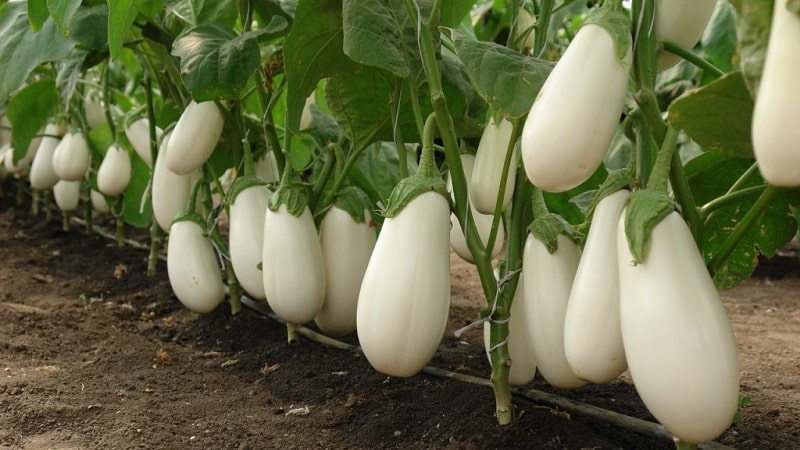
| Ripening time | Fruit shape | Length | Weight | Skin | Pulp | Harvest from 1 m² |
| 85-90 days | Oval | 18 cm | 190-230 g | White, shiny | Tender | 5-6 kg |
Ping pong f1
Mid-season hybrid for greenhouse conditions.
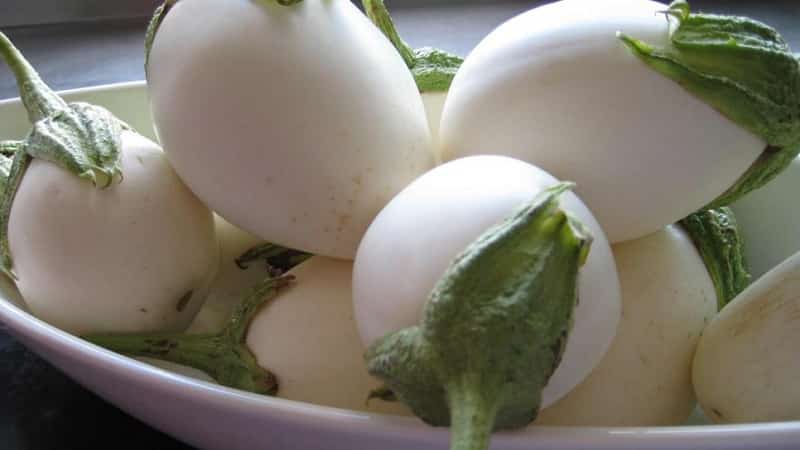
| Ripening time | Fruit shape | Length | Weight | Skin | Pulp | Harvest from 1 m² |
| 100-110 days | Round | 5-7 cm | 85-95 g | White, shiny | Dense | 7-8 kg |
Pelican f1
Mid-season hybrid for cultivation in greenhouse conditions.
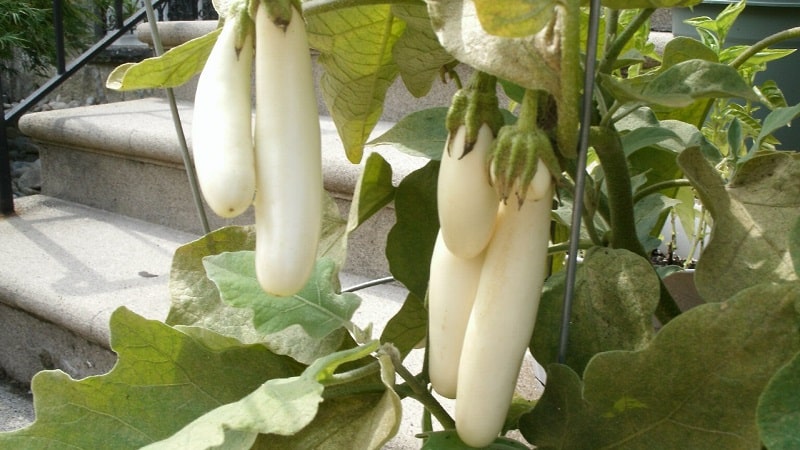
| Ripening time | Fruit shape | Length | Weight | Skin | Pulp | Harvest from 1 m² |
| 115-117 days | Cylindrical | 17 cm | 90-135 g | White glossy | Dense | 7-8 kg |
Ovoid
Early ripening Japanese variety for growing in warm regions in unprotected soil.
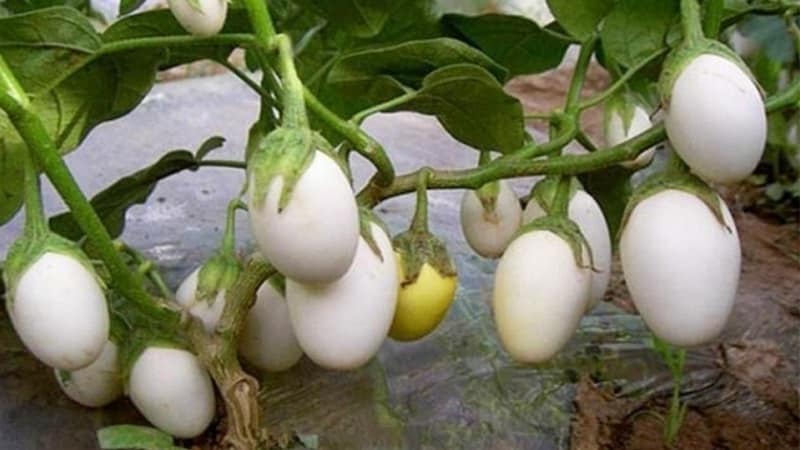
| Ripening time | Fruit shape | Length | Weight | Skin | Pulp | Harvest from 1 m² |
| 60-65 days | Oval | 10 cm | 30-35 g | White glossy | Tender | 5-6 kg |
Swan
Mid-season variety for unprotected soil.
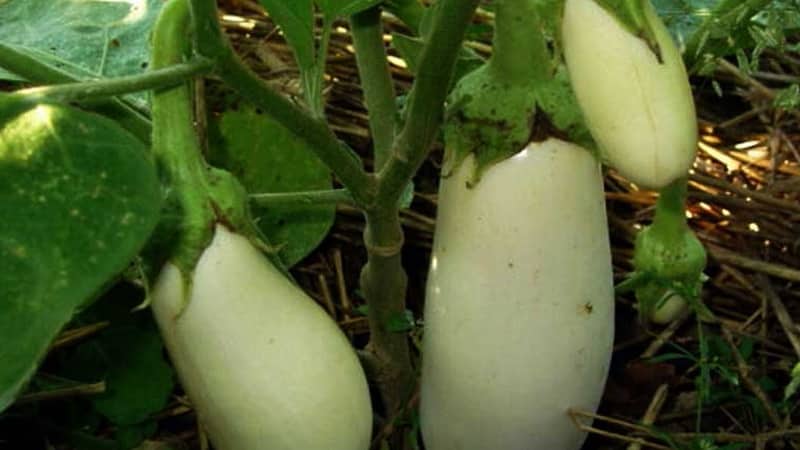
| Ripening time | Fruit shape | Length | Weight | Skin | Pulp | Harvest from 1 m² |
| 100-130 days | Pear-shaped | 20 cm | 150-350 g | White, shiny | Dense | 18 kg |
Snow
Early ripening variety for cultivation in open and closed areas.
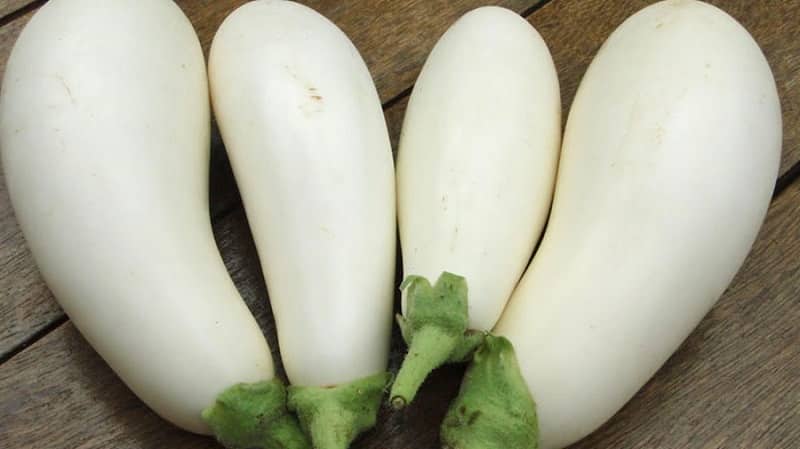
| Ripening time | Fruit shape | Length | Weight | Skin | Pulp | Harvest from 1 m² |
| 100-110 days | Cylindrical | 20 cm | 250-350 g | White, thin, glossy | Dense | 5-6 kg |
Icicle
Mid-season variety for cultivation in the garden.
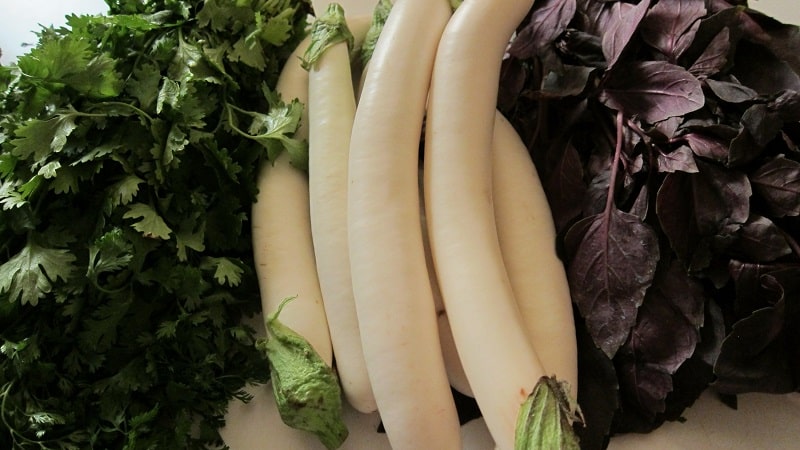
| Ripening time | Fruit shape | Length | Weight | Skin | Pulp | Harvest from 1 m² |
| 110-117 days | Cylindrical | 30 cm | 100-170 g | White, shiny | Tender | 7-8 kg |
Stork
An early ripening variety for growing in the south of the country in film greenhouses.
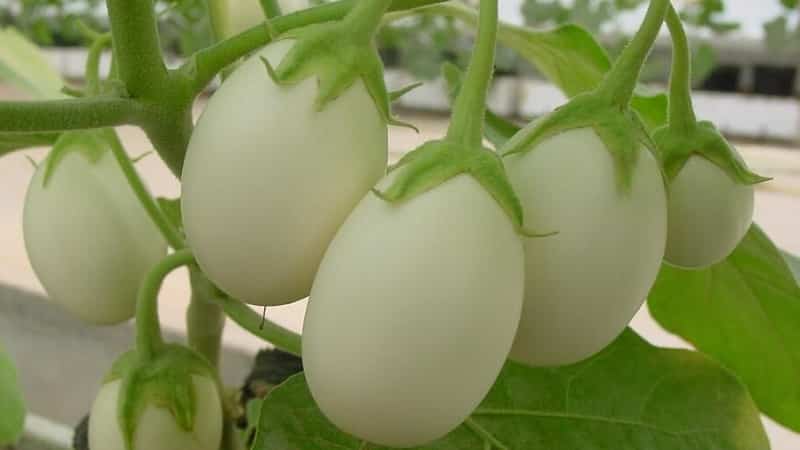
| Ripening time | Fruit shape | Length | Weight | Skin | Pulp | Harvest from 1 m² |
| 90-100 days | Ovoid | 10 cm | 90-110 g | Thin, white | Juicy | 6-7 kg |
Features of cultivation
The cultivation of white eggplants is practically no different from the cultivation of purple ones.. On the seed package, the manufacturer indicates for what conditions the hybrid was bred.
All eggplants are grown through seedlings. Seeds are sown at the end of February 60-65 days before transferring to a permanent location. The seed material is soaked in growth stimulants (Zircon, Epin-Extra) and sown immediately in separate pots, since the seedlings do not tolerate picking well.
The soil for seedlings is prepared on the basis two parts of turf, one part of humus, one part of sand and add 20 g of superphosphate. Dried eggshells can be mixed into the soil to grow strong and healthy seedlings.
Fertilizers are applied at the stage of growing seedlings to strengthen the root system. To do this, use mineral mixtures with organic matter (humus). Foliar feeding with the preparations “Ovary” and “Bud” stimulates the formation of ovaries and increases the resistance of plants to nightshade diseases.
And more about the “little blue ones”:
Planting in the ground is done in several ways:
- Two rows are formed and each bush is planted in a hole at a distance of 40 cm. The width between rows is 40 cm, between rows is 70 cm.
- The bushes are planted in one row with a gap between holes of 30 cm, between rows of 60 cm. One bush per hole.
- 2 seedlings are planted in one hole. The distance between bushes and rows is 70 cm.
The soil is mulched with hay or straw to reduce the need for constant loosening.
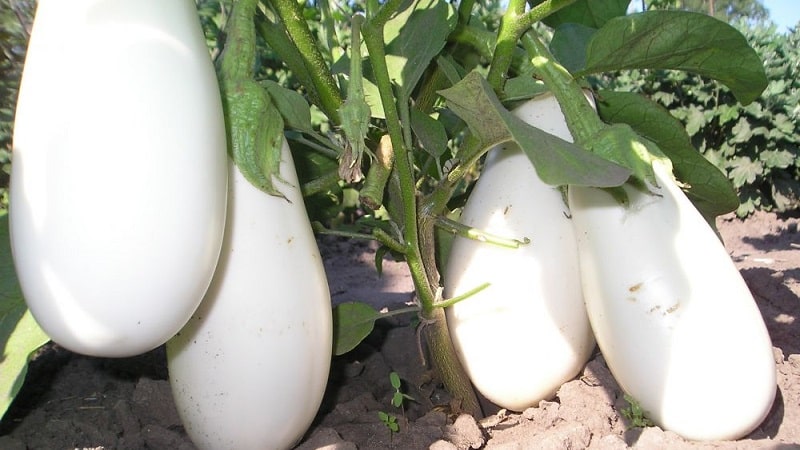
After planting in the ground, eggplants need abundant and frequent watering. warm, settled water - every 2-3 days. In hot weather, plants are watered daily. Timely watering is especially important when plants are flowering. When there is a lack of moisture, the peduncle falls off, and this leads to loss of yield.
Bushes are fed with organic matter. For this purpose, chicken droppings, mullein, and ash are used. The frequency of fertilizing is once every 7 days. When growing white eggplants on clay, sandy soil, the bushes are fertilized with potassium and phosphorus.
Important! The application of mineral compounds is stopped three weeks before harvesting the fruits.
Application
White eggplants are highly valued in cooking due to the delicate structure of the pulp without bitterness., thin skin, complete or partial absence of seeds and pleasant taste. The fruits are used to prepare stews, savory appetizers, vegetable caviar, salads, soups, and casseroles. The product is stewed, baked in the oven and grilled, boiled, fried, steamed, stuffed, marinated.
We suggest using the recipe for baked white eggplants with cheese. For this you will need:
- eggplants – 800 g;
- tomatoes – 500 g;
- sheep's milk cheese – 150 g;
- olive oil – 3 tbsp. l.;
- garlic – 2 cloves;
- parmesan – 50 g;
- a mixture of Italian herbs.
Preparation:
- The eggplants are washed with warm water and cut into 0.5 cm thick slices. The skin is thin and tender, so there is no need to cut it off. Fry the rounds in olive oil on both sides and place on a paper towel to remove excess fat.
- Scald the tomatoes with boiling water and remove the skin. Puree the pulp using a blender. Add pressed garlic and a mixture of Italian herbs to taste.
- Place the eggplants in the pan, top with thin slices of cheese and a little tomato sauce. Repeat layers until you run out of ingredients. Grate Parmesan cheese on a fine grater and sprinkle on top.
- Place the casserole in the oven and cook for 30 minutes at 180°C.
Reviews from summer residents
Those who have tried to grow white eggplants, leave positive feedback about the culture.
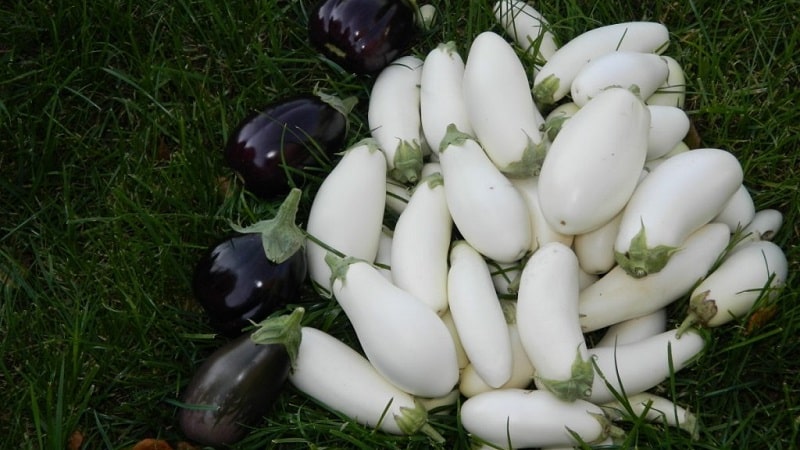
Vadim, Voronezh: “Last year I planted the Snow hybrid in a greenhouse at the dacha. The result is excellent. Productivity is high, the fruits are tasty, without bitterness. Care is the same as for purple eggplants".
Olga, Saratov: “I have been growing white eggplants Taste of mushrooms for five years in a row. Their taste is amazing, really reminiscent of wild mushrooms. The skin is thin, there is no need to cut it off before cooking, the flesh is tender and does not taste bitter.”.
Inna, Chekhov: “I tried to plant the White Night hybrid at the dacha. The harvest was collected until late autumn. The cultivation technology is no different from the “little blue ones”. The fruits are tasty, the flesh is not bitter, the skin is thin. Used to prepare winter twists, stewed, baked, fried".
Conclusion
Cultivating white eggplants is no different from growing their purple relatives. The only thing you need to remember: the culture loves sun and abundant watering.
On sale you will find seeds of various varieties and hybrids suitable for growing in greenhouses, greenhouses and vegetable gardens. The fruits are distinguished by the absence of a bitter taste, have a thin skin and tender pulp. The versatility of use in cooking allows you to experiment and create delicious dishes.